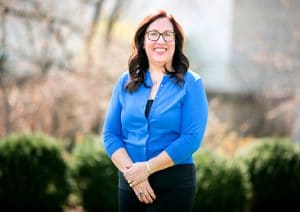By Jennifer Pendleton, vice president Indiana, Aly Sterling Philanthropy
When an organization begins a fundraising effort, it tends to be special events.
We dream up creative new ways to hold auctions, cook-offs, bake sales and golf outings.
While these events bring people in our door – regardless of whether they are interested in our cause or not — we quickly learn the return on investment (ROI) for these events is low.
Each takes a lot of work and doesn’t necessarily yield long-term donors or relationships that lead to sustainable gifts. Many people just come to have fun and play golf with friends, not to get involved or learn more about the organization’s mission.
That’s when we get “it.” Fundraising is all about relationships. And we understand – firsthand – that we need to cultivate the donors with potential for the largest gifts. We know this is where the cost to raise a dollar is the lowest. So we work to screen our major gift prospects, cultivate the relationships and woo them by showing how we can work together to impact the community.
Then we wait and hope they fall in love with our mission and decide to make a sacrificial gift to our organization. The highs and lows of chasing major gifts are thrilling and exhausting, and can make planning for programmatic needs challenging.
World weary and seeing those closest with new eyes
At some point, however, we realize there are people who have been loyally giving to our organization over the years, sitting right under our noses.
Right under our noses!
These people are so close to our mission we’re practically neighbors. We don’t need to convince them we’re trustworthy or that our work matters. These donors next door are also already writing checks and volunteering to help. We don’t even need to convince them to act.
That’s when it dawns on us: perhaps we’re both ready for a deeper, more meaningful relationship…
Mature programs make room for all kinds of friends
Our mission already has a devoted crew of donors and doers. So, why do we ignore them to compete against every other organization in town for the same slate of big donors?
While these “usual suspects” are undeniably important, they only represent part of the picture. Every nonprofit should pursue a diversified spectrum of donors. What does the diversified spectrum look like? Is it one-time donors? Board member introductions?
Sustainable fundraising programs cultivate a range of donors with the aim of building loyalty and providing more and better ways for them to engage.
Getting started
An organization’s databases contain an abundance of next-level donors waiting for the invitation to do more! They have raised their hands, possibly multiple times, to show us they care.
It makes sense we should start by getting to know our middle-donor segment. Are they Gen Xers? Millennials? Baby boomers? Knowing who’s on our list (and how they like to engage) will help inform early decisions about outreach.
As we begin building relationships, we should develop a program to standardize communication with this group moving forward. Note what works and what doesn’t, and ask donors for feedback. Our goal should be to create a simple-to-operate program that offers meaningful engagement for everyone.
Finally, these are our donor-pyramid people. If they see the results and impact in their giving, they could invest a little more (or a lot more) each year. Is there a path for them? If not, create one that provides them with opportunities to deepen their involvement with the organization’s mission.
Now’s the time to take the first step to identify and connect with your donors next door to create deeper relationships that lead to more meaningful engagement and loyal support…


